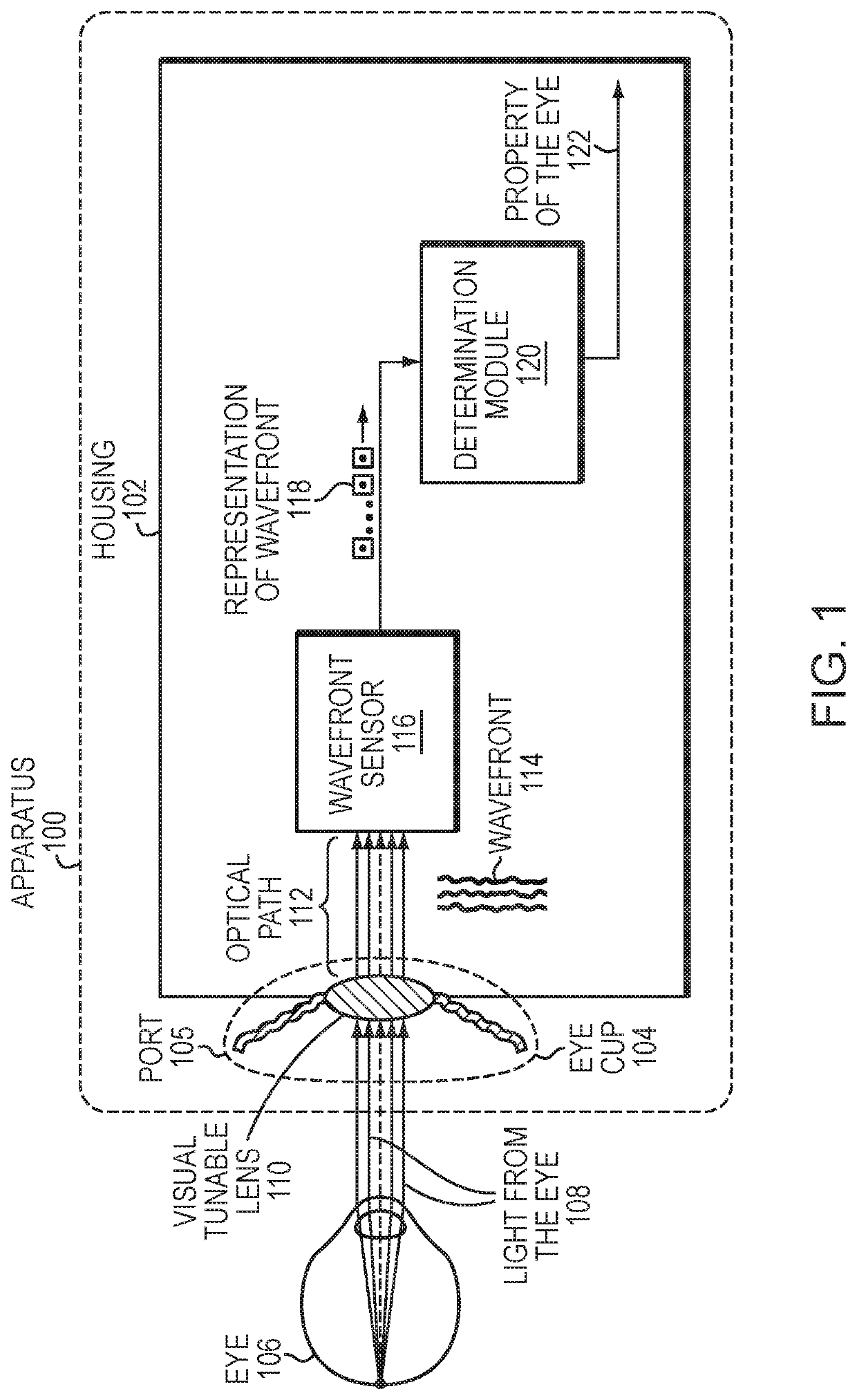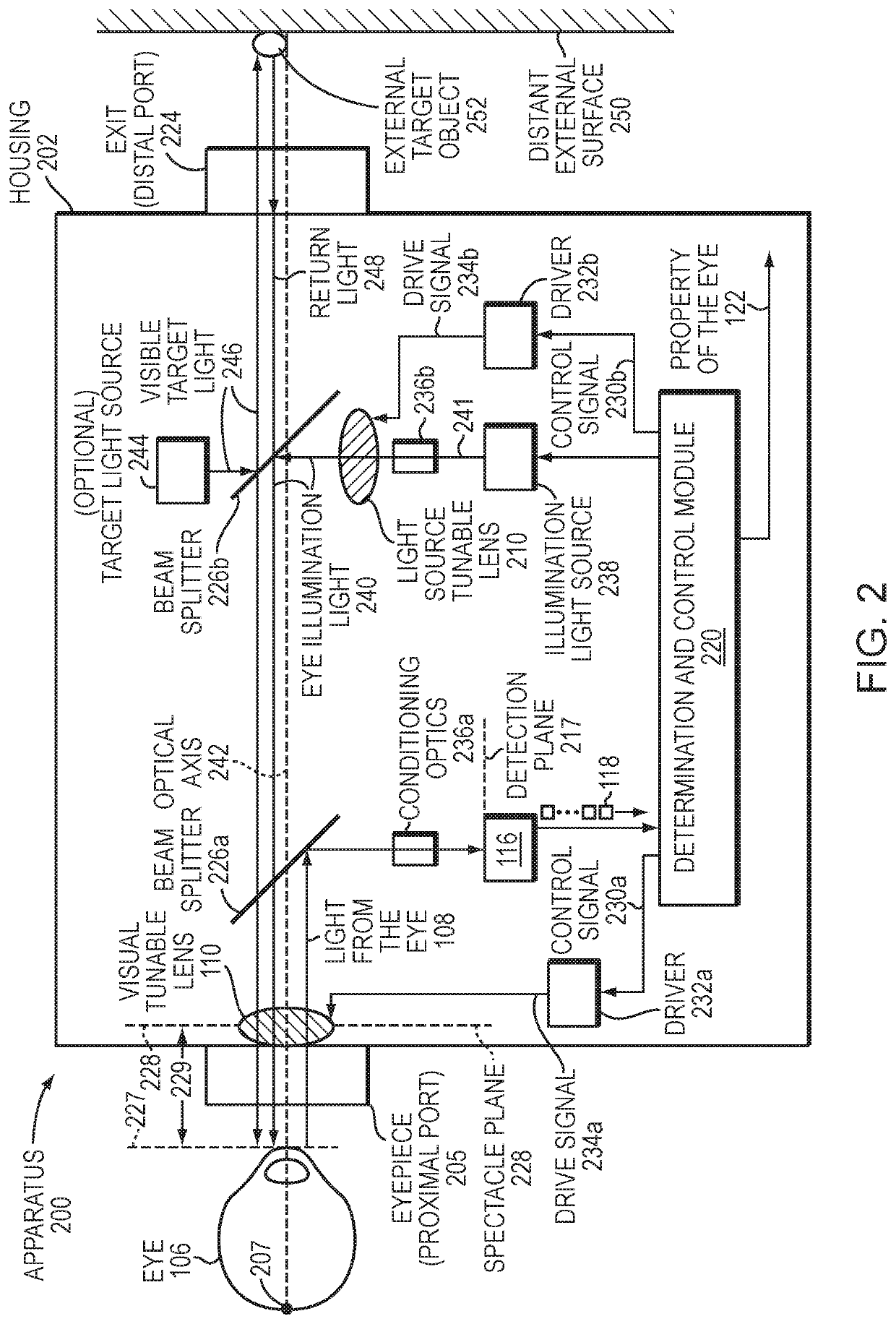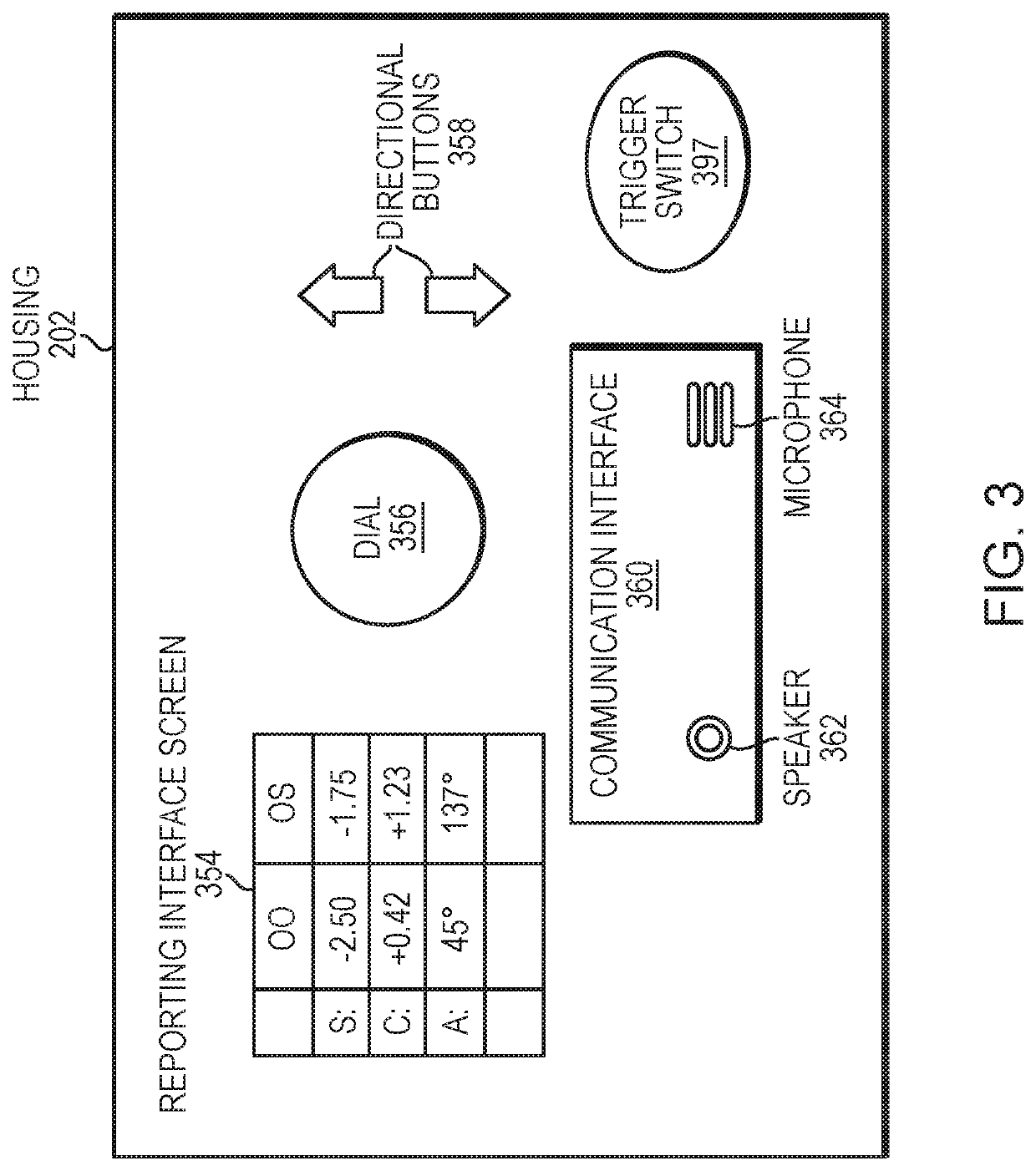Tunable-lens-based refractive examination
a technology of tunable lenses and refractive examination, applied in the field of tunable lenses-based refractive examination, can solve the problems of not being effective for all eye patients, requiring waiting time, and not allowing patients to view through the device, so as to improve the flexibility of patient and clinician use, improve the accuracy of refractive results, and improve the effect of examination speed
- Summary
- Abstract
- Description
- Claims
- Application Information
AI Technical Summary
Benefits of technology
Problems solved by technology
Method used
Image
Examples
Embodiment Construction
[0048]A description of example embodiments of the invention follows.
[0049]Refractive eye examinations by an optometrist or ophthalmologist typically involve using a phoropter to determine which of many fixed lens settings produces the best eyesight, subjectively, for a given patient. Clinical phoropters are usually binocular (enabling both of a patient's eyes to view through separate sets of lenses) and open-view (enabling a patient to view, through the phoropter lenses, a distant target pattern). Typically, the patient is asked to focus on a target pattern situated a distance of about 20 feet from the patient's eye. The open-view design also performs the important function of encouraging the patient's eyes to remain unaccommodated (relaxed and as optimized as possible for long-distance viewing) during the measurement. The unaccommodated state is an important clinical prerequisite for accurate measurements for refractive correction of distance vision. Thus, using typical clinical ph...
PUM
 Login to View More
Login to View More Abstract
Description
Claims
Application Information
 Login to View More
Login to View More - R&D
- Intellectual Property
- Life Sciences
- Materials
- Tech Scout
- Unparalleled Data Quality
- Higher Quality Content
- 60% Fewer Hallucinations
Browse by: Latest US Patents, China's latest patents, Technical Efficacy Thesaurus, Application Domain, Technology Topic, Popular Technical Reports.
© 2025 PatSnap. All rights reserved.Legal|Privacy policy|Modern Slavery Act Transparency Statement|Sitemap|About US| Contact US: help@patsnap.com



